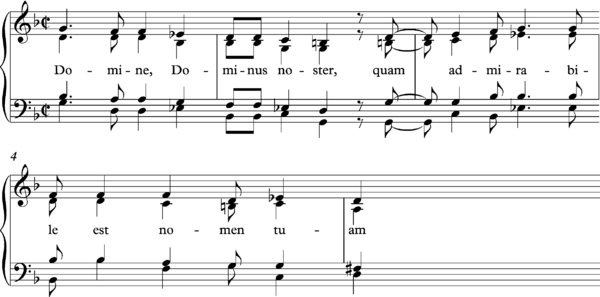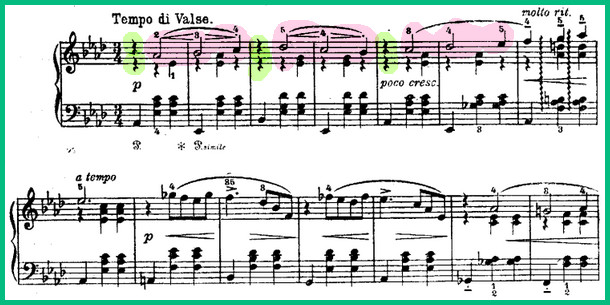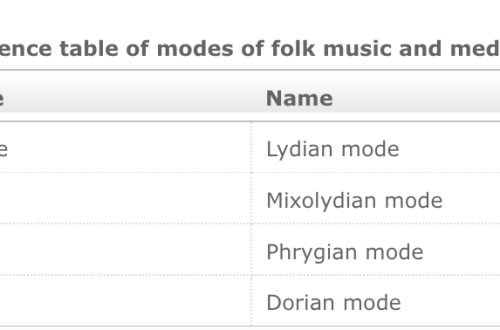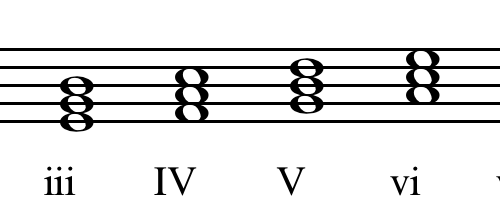
Syncopation in music and its varieties
Contents
Syncopation in music is the shift of rhythmic stress from a strong beat to a weak one. What does it mean? Let’s try to figure it out.
Music has its own measure of time – this is a uniform pulse beat, each beat is a fraction of a beat. The beats are strong and weak (like stressed and unstressed syllables in words), they alternate in a certain order, called a meter. Musical stress, that is, the accent usually falls on strong beats.
Simultaneously with the uniform beating of the pulse shares in the music, a variety of note durations alternate. Their movement forms a rhythmic pattern of the melody with its own logic of stress. As a rule, the stresses of rhythm and meter are the same. But sometimes the opposite happens – the stress in the rhythmic pattern appears earlier or later than the strong beat. Thus, there is a shift in stress and syncopation occurs.
When do syncopations occur?
Let’s look at the most typical cases of syncope.
CASE 1. Syncopation most often occurs when long sounds appear at low times after short durations at strong times. Moreover, the appearance of sound at a weak time is accompanied by a push – an accent that breaks out of the general movement.

Such syncopations usually sound sharp, increase the energy of the music, and can often be heard in dance music. A vivid example is the dance “Krakowiak” from the second act of the opera by M.I. Glinka “Ivan Susanin”. Polish dance in a mobile tempo is distinguished by an abundance of syncopations that attract the ear.
Look at the musical example and listen to a fragment of the audio recording of this dance. Remember this example, it is very typical.

CASE 2. Everything is exactly the same, only a long sound on a weak time appears after a pause on a strong beat.

Melodies that are calm in tempo, in which syncopated large durations (quarters, half) are introduced after pauses, as a rule, are very melodious. The composer P.I. was very fond of such syncopations. Chaikovsky. In his best melodies, we will hear just such “soft”, melodic syncopations. As an example, let’s take the play “December” (“Christmas Day”) from the album “The Seasons”.

CASE 3. Finally, syncopations occur when long sounds appear at the border of two measures. In such cases, the note begins to sound at the end of one bar, and ends – already in the next. Two parts of the same sound, located in adjacent measures, are connected with the help of a league. At the same time, the continuation of the duration takes the time of the strong beat, which, it turns out, is skipped, that is, it does not strike. Part of the power of this missed hit is transferred to the next sound, which appears already at a weak time.

What are the types of syncope?
In general, syncopations are divided into intra-bar and inter-bar syncopations. The names speak for themselves and there is probably no need for any additional explanations here.
Intra-bar syntopes are those that do not go beyond one bar in time. They, in turn, are divided into intralobar and interlobar. Intralobar – within one share (for example: the sixteenth, eighth and again the sixteenth note – together do not exceed the fraction of the musical size, expressed by a quarter). Interbeats span multiple beats in a single measure (for example: an eighth, a quarter, and an eighth in a 2/4 measure).

Inter-measure syncopation is the case we have discussed above, when long sounds appear at the border of two measures and their parts are connected by leagues.
The expressive properties of syncopation
Syncopation is a very important expressive means of rhythm. They always draw attention to themselves, rivet the ear. Syncopation can make music sound either more energetic or more melodious.





